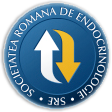
- Login
- Register
- Home/Current Issue
- About the journal
- Editorial board
- Online submission
- Instructions for authors
- Subscriptions
- Foundation Acta Endocrinologica
- Archive
- Contact
 Romanian Academy
Romanian Academy
 The Publishing House of the Romanian Academy
The Publishing House of the Romanian Academy

ACTA ENDOCRINOLOGICA (BUC)
The International Journal of Romanian Society of Endocrinology / Registered in 1938in Web of Science Master Journal List
Acta Endocrinologica(Bucharest) is live in PubMed Central
Journal Impact Factor - click here.

-
Editorial
Grigorie D
Do You Frax?Acta Endo (Buc) 2012 8(2): 265-266 doi: 10.4183/aeb.2012.265
-
Notes & Comments
Voicu V, Medvedovici A, Miron D, Radulescu F
A novel approach on pharmacokinetic/pharmacodynamic correlations of risperidone: understanding its safety and efficacy profilesActa Endo (Buc) 2010 6(2): 265-285 doi: 10.4183/aeb.2010.265
AbstractThe pharmacokinetic characteristics of a compound as well as the immediate consequences of its physicochemical behavior during interactions with biological structures,\r\nrepresent the key issues for its pharmacodynamic profile, starting from the most fundamental global aspects (i.e. central and / or peripheral action) to the most detailed ones (i.e. molecular mechanism of action).\r\nSuccessive metabolic reactions lead to either bioactivation or bioinactivation of themolecular entity. A particular importance is currently assigned to several molecular\r\nphysicochemical descriptors, for instance the polarity degree (mirroring the changes of partition coefficients and of the permeability of biological structures), and emphasizing on distribution and renal excretion rate.\r\nThe active metabolite (9-hydroxy-risperidone) of the atypical antipsychotic agent risperidone has an increased polar character and, consequently, its pharmacokinetic profile is modified compared to the parent drug: especially the penetration through the bood brain barrier and the efflux pump mediated transport were considered. In this context, the kinetic characteristics and their correlation with the pharmacodynamic properties for the two active\r\nentities, as well as the consequences dealing with the antipsychotic efficacy, the safety and efficacy profiles can be anticipated. The present approach critically asseses the available data from literature corroborated with the personal findings over the last years. -
Case Report
Datcu MD, Datcu G, Fermesanu I, Aursulesei V
Pheochromocytoma – late diagnosis after subarachnoid haemorrhageActa Endo (Buc) 2009 5(2): 265-274 doi: 10.4183/aeb.2009.265
AbstractBackground: Despite a low incidence and prevalence, pheochromocytoma requires a\r\nparticular attention when evaluating hypertensive patients. If undiagnosed, the excessive\r\nand prolonged secretion of catecholamines may cause considerable cardiovascular\r\nmorbidity and mortality. The wide variability of clinical manifestations makes the diagnosis\r\ndifficult, and biochemical confirmation of the disease is mandatory.\r\nCase report: a 32-year-old patient, admitted to hospital with acute left ventricular\r\nfailure caused by severe arterial hypertension associated with the clinical triad (headaches +\r\npalpitations + sweating). The debut of the disease was manifested with a subarachnoid\r\nhaemorrhage. The aetiology remains unclear in the absence of confirmed arterial\r\nhypertension antecedents. In subsequent months he had paroxysmal rhythm abnormalities\r\nassociated with ECG signs of left ventricular hypertrophy considered to be due to nonobstructive\r\nhypertrophic cardiomyopathy. For a period of further three years the patient was\r\nrepeatedly hospitalized for paroxystic elevations of blood pressure not responding to\r\nantihypertensive medication. He developed diabetes mellitus and was started on insulintherapy.\r\nDuring the recent hospitalization, the diagnosis of pheochromocytoma was\r\nconsidered in view of clinical history and the severe hypertension-induced organ damage.\r\nThe diagnosis was confirmed biochemically and a right adrenal tumour was demonstrated\r\non CT. After a successful open adrenalectomy his hypertension was cured.\r\nIn conclusion, the case presented highlights the importance of recognising the symptoms\r\nand clinical signs suggestive of PHEO in order to reach a correct and timely diagnosis. -
Case Report
Sethi SM, Vohra M, Ali SA
Euglycemic Diabetic Ketoacidosis (EDKA) in a Patient Receiving DapagliflozinActa Endo (Buc) 2021 17(2): 266-269 doi: 10.4183/aeb.2021.266
Abstractyears because of their cardio-protective and renoprotective properties in diabetes. SGLT-2 inhibitors, when introduced in diabetic patients, may cause euglycemic diabetic ketoacidosis. A 55-year-old woman presented with low-grade fever, vomiting, and lethargy. She was started on dapagliflozin two years back. On workup, she was diagnosed with euglycemic diabetic ketoacidosis (EDKA) and was managed accordingly. She improved clinically while her dapagliflozin was stopped. With a literature search, we have identified 15 case reports of EDKA with dapagliflozin since 2015. There are no standard guidelines regarding the monitoring of patients for this rare but potentially morbid complication. Moreover, the exact mechanism for this is unknown. Various precipitating factors are linked with SGLT-2 inhibitors in promoting EDKA. We recommend that customary plans should comprise educating the patient about this rare complication before commencing medication, close follow-up with serial electrolyte monitoring, and discontinuing medications in the state of infection, dehydration and recent surgery and serious illness requiring hospitalization. -
General Endocrinology
Chodari L, Mohammadi M, Mohaddes G, Ghorbanzadeh V, Dariushnejad H
The Effect of Testosterone and Voluntary Exercise, Alone or Together, on miRNA-126 Expression Changes in Heart of Diabetic RatsActa Endo (Buc) 2017 13(3): 266-271 doi: 10.4183/aeb.2017.266
AbstractMethods. Ninety Wistar male rats were used in this study. Type 1 diabetes was induced by i.p injection of 50 mg/kg of streptozotocin in all animals. After 42 days of treatment with testosterone (2mg/kg/day) or voluntary exercise alone or in combination, the heart of the rats has been removed and MicroRNA was extracted from the heart using miRCURYTM RNA isolation kit. Results. Our results showed that either testosterone or exercise increased miRNA-126 expression levels in the heart of diabetic rats. Treatment of diabetic rats with testosterone and exercise at the same time had a synergistic effect on miRNA-126 levels in the heart. Furthermore, in castrated diabetes group, miRNA-126 levels were significantly decreased in heart, whereas either testosterone treatment or exercise training enhanced expression of this miRNA. Also, simultaneous treatment of castrated diabetic rats with testosterone and exercise had an additive effect on miRNA-126 expression levels. Conclusion. This study showed that testosterone and exercise promote an increase in the expression of miRNA-126 in the heart tissue and this may be related to cardiac angiogenesis. These results may indicate that testosterone and exercise can help to prevent progression of diabetic cardiomyopathy due to impaired angiogenesis in the heart. -
Actualities in medicine
Burcea I, Poiana C
Updates in Aggressive Pituitary TumorsActa Endo (Buc) 2020 16(2): 267-273 doi: 10.4183/aeb.2020.267
AbstractAggressive pituitary tumors lie between pituitary adenomas and carcinomas, displaying a particular behavior, with invasion, resistance to conventional therapy and early recurrence. The radiological grading, along with prognostic markers such as Ki-67 proliferation index, p53, MGMT and transcription factors are important factors in establishing the benign, aggressive, or malignant nature of pituitary tumors, with a more accurate treatment strategy. In this article, we report the novelties in defining, classifying, and managing aggressive pituitary tumors and their malignant potential, focusing on clinicopathological, histological, molecular and radiological data. -
Images in Endocrinology
Radulescu V, Dumitrascu A, Alexandrescu D, Badiu C
Zoster Triggers in Graves OphthalmopathyActa Endo (Buc) 2023 19(2): 267-268 doi: 10.4183/aeb.2023.267
Abstract- -
Case Report
Cesareo R, Iozzino M, De Rosa B, Isgro MA, Di Stasio E
A Rare Case of Hypoparathyroidism Associated to Rendu-Osler-Webber SyndromeActa Endo (Buc) 2011 7(2): 267-272 doi: 10.4183/aeb.2011.267
AbstractBackground: Hereditary Haemorrhagic Telangiectasia (the Rendu-Osler-Weber syndrome) is a relatively common, underrecognized autosomal dominant disorder that results from multisystem vascular dysplasia. It makes vascular walls vulnerable to trauma and rupture, causing telangiectases and\r\narteriovenous malformations of skin, mucosa and viscera. It is clinically characterized by recurrent epistaxis, telangiectasia lesions on the face, hands and oral cavity, visceral arteriovenous malformations and positive family history. Epistaxis is often the first manifestation associated with haematologic, neurologic, pulmonary, dermatologic and gastrointestinal complications.\r\nCase report: a patient came to our observation presenting recurrent epistaxis with a severe iron deficiency anaemia and hypoparathyroidism. Genetic, laboratory and imaging findings were compatible with the presence of Rendu-Osler-Weber syndrome associated to a form of idiopathic hypoparathyroidism that could find its physiopathological origin in a consequence of an autoimmune process affecting\r\nparathyroids. -
Clinical review/Extensive clinical experience
Surcel M, Stamatian F
Folliculogenesis Disturbances within the Polycystic Ovarian Syndrome and Possible Consequences on Oocyte QualityActa Endo (Buc) 2012 8(2): 267-287 doi: 10.4183/aeb.2012.267
AbstractThe debates on the quality of oocytes in PCOS patients are still heated and controversy is very intense, with a wide\r\nspectrum of variations proposed. The present study aims at analyzing the main factors altered in the economy of PCOS\r\npathogenesis, mainly those involved in the folliculogenesis dysfunction, and, also, to evaluate their potentially detrimental role upon oocyte quality.\r\nIndividual elimination of the more prominent follicular factors, at least through deviation from the normal, as compared to the degree of oocyte maturation did not manage to be cleared in unequivocal terms for any of them. Most interestingly, the spectrum of answers varied from\r\nprofoundly modified values to the absence of any differences whatsoever, inevitably leading, as sole functional conclusion, to assuming the extremely heterogeneous\r\ncharacter of this affection. -
Case Report
Iliescu L, Toma L, Minzala G, Orban C
Acute Hepatitis after Methimazole. Case ReportActa Endo (Buc) 2014 10(2): 267-272 doi: 10.4183/aeb.2014.267
AbstractBackground. There are few cases of methimazole induced hepatitis. The mechanism is probably related to the fact that it is a hepatic- metabolised drug. Objective. To demonstrate the fact that an acute cholestatic hepatitis can be triggered by methimazole. Design. While dealing with a major cholestatic syndrome with cytolysis, we performed the following steps: correct and complete history, serum detection of acute viral hepatitis, an autoimmune cause and finally liver biopsy. Subjects and Methods. We present the case of an 80 year old woman, with a history of hyperthyroidism, in treatment with Methimazole. After a month, the patient developed jaundice, for which she was admitted to our clinic. On admission she presented an important cholestatic syndrome, with elevated transaminases (5 times normal). Results. None of the laboratory tests indicated a possible viral infection or autoimmune disease. Abdominal ultrasound revealed no possible obstruction of the biliary system. Ultimately we performed a liver biopsy, which revealed inflammatory infiltration and cholestasis. Conclusion. We conclude that the hepatitis was induced by methimazole. Corticotherapy was initiated, with a relatively slow but favourable evolution. I131- Radiation therapy was elected for the treatment of hyperthyroidism.